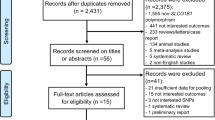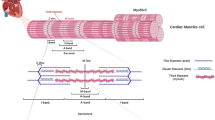Abstract
Numerous studies have illustrated the relationship between SLCO1B1 T521C polymorphism and statin-induced myopathy risk; however, this association is not consistent. Three electronic databases (PubMed, EMBASE, and the Cochrane Library) were searched from inception to October 2017 to identify potential studies. The summary odds ratios (ORs) with 95% confidence intervals (CIs) were calculated from different genetic models by using a random-effects model. Fourteen studies comprising 3265 myopathy patients and 7743 controls were included. The summary ORs suggested that 521CC (OR: 2.31; 95% CI: 1.15–4.63; P = 0.019), 521TC (OR: 1.34; 95% CI: 1.02–1.76; P = 0.034), and 521CC + TC (OR: 1.82; 95% CI: 1.32–2.51; P < 0.001) were associated with a greater risk of statin-induced myopathy than 521TT. The higher incidence of statin-induced myopathy was found to be significantly correlated with the C allele compared with the T allele (OR: 1.89; 95% CI: 1.36–2.62; P < 0.001). In addition, we observed that 521CC + TC was associated with an increased risk of myopathy in individuals who received simvastatin (OR: 2.35; 95% CI: 1.08–5.12; P = 0.032) or rosuvastatin (OR: 1.69; 95% CI: 1.07–2.67; P = 0.024) when compared with 521TT. The 521C allele was associated with a greater risk of cerivastatin-induced myopathy than the T allele (OR: 1.95; 95% CI: 1.47–2.57; P < 0.001). The findings of this study indicated that SLCO1B1 T521C was associated with a significantly higher risk of statin-induced myopathy, especially for simvastatin, rosuvastatin, and cerivastatin. Future studies should be conducted in subjects receiving specific types of drugs, and any potential adverse events need to be explored.
This is a preview of subscription content, access via your institution
Access options
Subscribe to this journal
Receive 6 print issues and online access
$259.00 per year
only $43.17 per issue
Buy this article
- Purchase on Springer Link
- Instant access to full article PDF
Prices may be subject to local taxes which are calculated during checkout






Similar content being viewed by others
References
Baigent C, Keech A, Kearney PM, Blackwell L, Buck G, Pollicino C, et al. Efficacy and safety of cholesterol-lowering treatment: prospective meta-analysis of data from 90,056 participants in 14 randomised trials of statins. Lancet (Lond, Engl). 2005;366:1267–78.
Feng Q, Wilke RA, Baye TM. Individualized risk for statin-induced myopathy: current knowledge, emerging challenges and potential solutions. Pharmacogenomics. 2012;13:579–94.
Thompson PD, Clarkson P, Karas RH. Statin-associated myopathy. JAMA. 2003;289:1681–90.
de Lemos JA, Blazing MA, Wiviott SD, Lewis EF, Fox KA, White HD, et al. Early intensive vs a delayed conservative simvastatin strategy in patients with acute coronary syndromes: phase Z of the A to Z trial. JAMA. 2004;292:1307–16.
Dujovne CA, Chremos AN, Pool JL, Schnaper H, Bradford RH, Shear CL, et al. Expanded clinical evaluation of lovastatin (EXCEL) study results: IV. Additional perspectives on the tolerability of lovastatin. Am J Med. 1991;91(1b):25s–30s.
Law M, Rudnicka AR. Statin safety: a systematic review. Am J Cardiol. 2006;97(8a):52c–60c.
Kashani A, Phillips CO, Foody JM, Wang Y, Mangalmurti S, Ko DT, et al. Risks associated with statin therapy: a systematic overview of randomized clinical trials. Circulation. 2006;114:2788–97.
Niemi M, Pasanen MK, Neuvonen PJ. Organic anion transporting polypeptide 1B1: a genetically polymorphic transporter of major importance for hepatic drug uptake. Pharmacol Rev. 2011;63:157–81.
Oshiro C, Mangravite L, Klein T, Altman R. PharmGKB very important pharmacogene: SLCO1B1. Pharm Genom. 2010;20:211–6.
Moher D, Liberati A, Tetzlaff J, Altman DG. Preferred reporting items for systematic reviews and meta-analyses: the PRISMA statement. PLoS Med. 2009;6:e1000097.
Wells G, Shea B, O’ Connell D. The Newcastle-Ottawa Scale (NOS) for assessing the quality of nonrandomised studies in meta-analyses. Ottawa (ON): Ottawa Hospital Research Institute; 2009. http://www.ohri.ca/programs/clinical_ epidemiology/oxford.html.
DerSimonian R, Laird N. Meta-analysis in clinical trials. Control Clin Trials. 1986;7:177–88.
Ades AE, Lu G, Higgins JP. The interpretation of random-effects meta-analysis in decision models. Medical decision making: an international journal of the Society for. Med Decis Mak. 2005;25:646–54.
Deeks JJ, Higgins JPT, Altman DG. Analyzing data and undertaking meta-analyses. In: Higgins J, Green S, editors. Cochrane Handbook for Systematic Reviews of Interventions 5.0.1. Oxford, UK: The Cochrane Collaboration; 2008; chap 9.
Higgins JP, Thompson SG, Deeks JJ, Altman DG. Measuring inconsistency in meta-analyses. BMJ. 2003;327:557–60.
Tobias A. Assessing the influence of a single study in the meta-analysis estimate. Stata Tech Bull. 1999;47:15–17.
Deeks JJ, Altman DG, Bradburn MJ. Statistical methods for examining heterogeneity and combining results from several studies in meta-analysis. In: Egger M, Davey Smith G, Altman DG, editors. Systematic reviews in health care: meta-analysis in context. 2nd edn. London: BMJ Books; 2001. p. 285-312.
Egger M, Davey Smith G, Schneider M, Minder C. Bias in meta-analysis detected by a simple, graphical test. BMJ. 1997;315:629–34.
Begg CB, Mazumdar M. Operating characteristics of a rank correlation test for publication bias. Biometrics. 1994;50:1088–101.
Carr DF, O’Meara H, Jorgensen AL, Campbell J, Hobbs M, Mccann G, et al. SLCO1B1 genetic variant associated with statin-induced myopathy: a proof-of-concept study using the clinical practice research datalink. Clin Pharmacol Ther. 2013;94:695–701.
Linde R, Peng L, Desai M, Feldman D. The role of vitamin D and SLCO1B1*5 gene polymorphism in statin-associated myalgias. Derm-Endocrinol. 2010;2:77.
Marciante KD, Durda JP, Heckbert SR, Lumley T, Rice K, Mcknight B, et al. Cerivastatin, genetic variants, and the risk of rhabdomyolysis. Pharm & Genom. 2011;21:280.
Voora D, Shah SH, Spasojevic I, Ali S, Reed CR, Salisbury BA, et al. The SLCO1B1*5 genetic variant is associated with statin-induced side effects. J Am Coll Cardiol. 2009;54:1609–16.
Group SC, Link E, Parish S, Armitage J, Bowman L, Heath S, et al. SLCO1B1 variants and statin-induced myopathy--a genomewide study. N Engl J Med. 2008;359:789–99.
Santos PC, Gagliardi AC, Miname MH, Chacra AP, Santos RD, Krieger JE, et al. SLCO1B1 haplotypes are not associated with atorvastatin-induced myalgia in Brazilian patients with familial hypercholesterolemia. Eur J Clin Pharmacol. 2012;68:273–9.
Danik JS, Chasman DI, MacFadyen JG, Nyberg F, Barratt BJ, Ridker PM. Lack of association between SLCO1B1 polymorphisms and clinical myalgia following rosuvastatin therapy. Am Heart J. 2013;165:1008–14.
Brunham LR, Lansberg PJ, Zhang L, Miao F, Carter C, Hovingh GK, et al. Differential effect of the rs4149056 variant in SLCO1B1 on myopathy associated with simvastatin and atorvastatin. Pharm J. 2012;12:233–7.
Donnelly LA, Doney AS, Tavendale R, Lang CC, Pearson ER, Colhoun HM, et al. Common nonsynonymous substitutions in SLCO1B1 predispose to statin intolerance in routinely treated individuals with type 2 diabetes: a go-DARTS study. Clin Pharmacol Ther. 2011;89:210–6.
Ferrari M, Guasti L, Maresca A, Mirabile M, Contini S, Grandi AM, et al. Association between statin-induced creatine kinase elevation and genetic polymorphisms in SLCO1B1, ABCB1 and ABCG2. Eur J Clin Pharmacol. 2014;70:539–47.
Bakar NS, Neely D, Avery P, Brown C, Daly AK, Kamali F. Genetic and clinical factors are associated with statin-related myotoxicity of moderate severity: a case-control study. Clin Pharmacol Ther. 2018;104:178–87.
Sai K, Kajinami K, Akao H, Iwadare M, Sato-Ishida R, Kawai Y, et al. A possible role for HLA-DRB1*04:06 in statin-related myopathy in Japanese patients. Drug Metab Pharmacokinet. 2016;31:467–70.
Hubacek JA, Dlouha D, Adamkova V, Zlatohlavek L, Viklicky O, Hruba P, et al. SLCO1B1 polymorphism is not associated with risk of statin-induced myalgia/myopathy in a Czech population. Med Sci Monit: Int Med J Exp Clin Res. 2015;21:1454–9.
Liu JE, Liu XY, Chen S, Zhang Y, Cai LY, Yang M, et al. SLCO1B1 521T > C polymorphism associated with rosuvastatin-induced myotoxicity in Chinese coronary artery disease patients: a nested case–control study. Eur J Clin Pharmacol. 2017;73:1409–16.
Duval S, Tweedie R. A nonparametric “Trim and Fill” method of accounting for publication bias in meta-analysis. J Am Stat Assoc. 2000;95:89–98.
Ye D, Zhu X, Wang Q, Tian X, Cheng J, Zhang E. Meta-analysis of the SLCO1B1 c.521T > C variant reveals slight influence on the lipid-lowering efficacy of statins. Ann Lab Med. 2015;35:329–35.
Hou Q, Li S, Li L, Li Y, Sun X, Tian H. Association between SLCO1B1 gene T521C polymorphism and statin-related myopathy risk: a meta-analysis of case-control studies. Medicine. 2015;94:e1268.
Acknowledgements
This study was supported by grants from the National Key R&D Program of China (no. 2016YFC0904900), National Natural Science Foundation of China (no. 81573504 and no. 81673509), Beijing Natural Science Foundation (no. 7171012), and National Science and Technology Major Projects for “Major New Drugs Innovation and Development” (no. 2017ZX09304028 and no. 2017ZX09101001).
Author information
Authors and Affiliations
Corresponding author
Ethics declarations
Conflict of interest
The authors declare that they have no conflict of interest.
Electronic supplementary material
Rights and permissions
About this article
Cite this article
Xiang, Q., Chen, Sq., Ma, Ly. et al. Association between SLCO1B1 T521C polymorphism and risk of statin-induced myopathy: a meta-analysis. Pharmacogenomics J 18, 721–729 (2018). https://doi.org/10.1038/s41397-018-0054-0
Received:
Revised:
Accepted:
Published:
Issue Date:
DOI: https://doi.org/10.1038/s41397-018-0054-0
This article is cited by
-
Decoding the Intricacies of Statin-Associated Muscle Symptoms
Current Rheumatology Reports (2024)
-
Evaluation of the EMPAR study population on the basis of metabolic phenotypes of selected pharmacogenes
The Pharmacogenomics Journal (2022)
-
The Role of Statins in Cirrhosis
Current Treatment Options in Gastroenterology (2022)
-
Combining familial hypercholesterolemia and statin genetic studies as a strategy for the implementation of pharmacogenomics. A multidisciplinary approach
The Pharmacogenomics Journal (2022)
-
A systematic review and meta-analysis of genotype-based and individualized data analysis of SLCO1B1 gene and statin-induced myopathy
The Pharmacogenomics Journal (2021)



